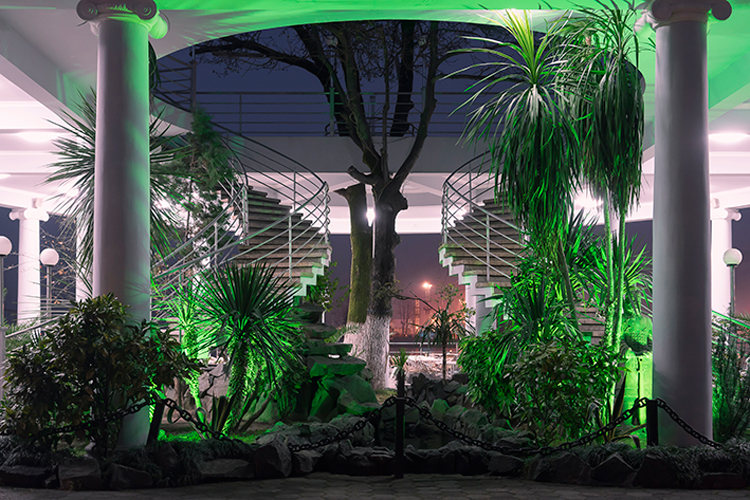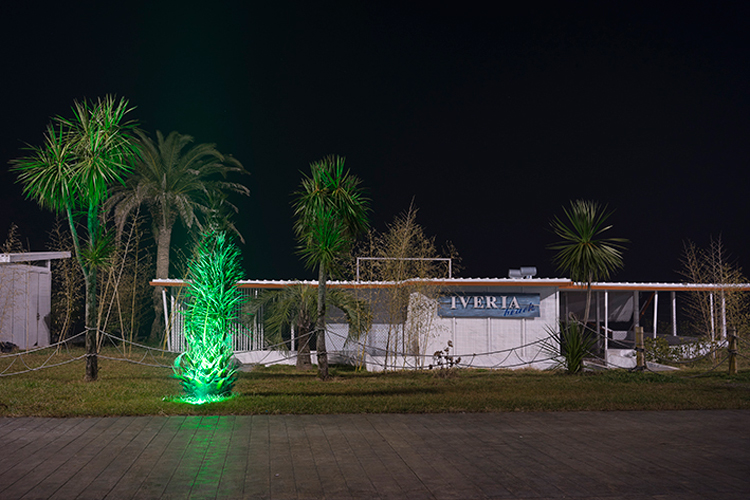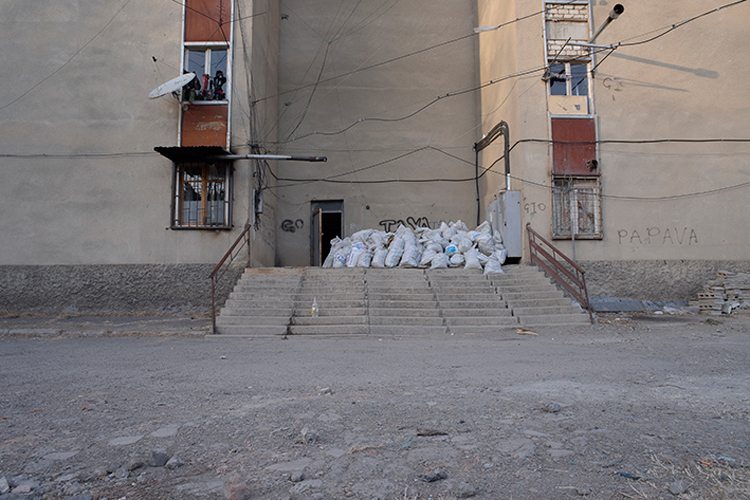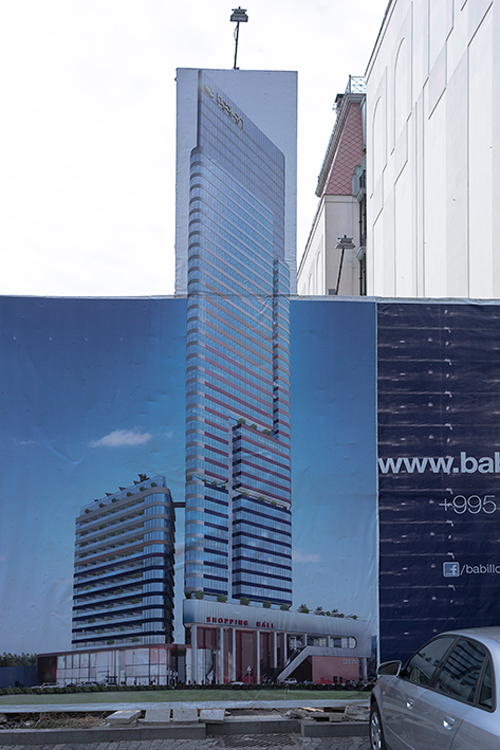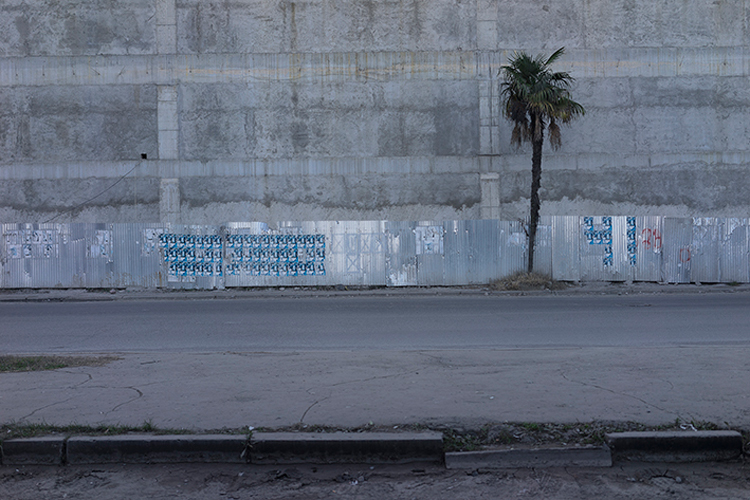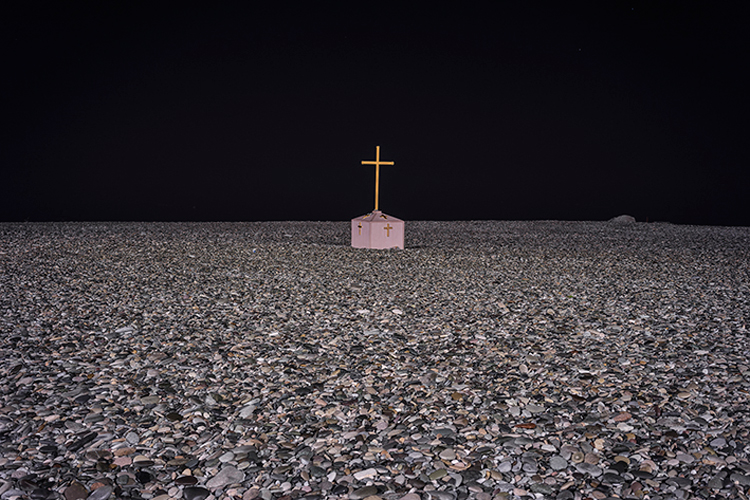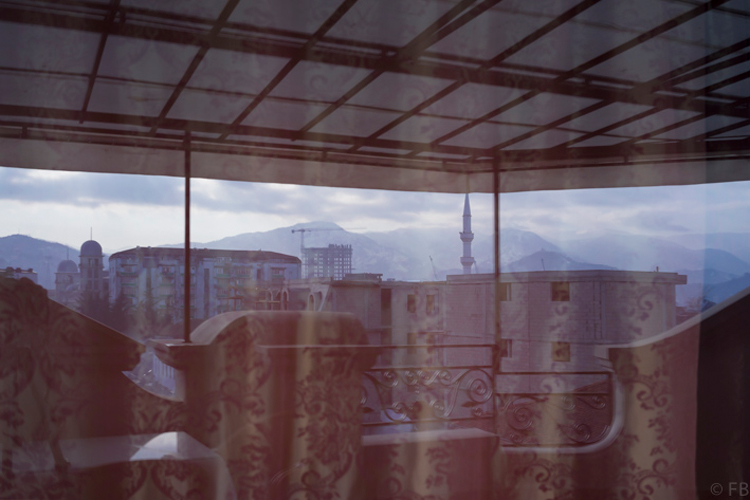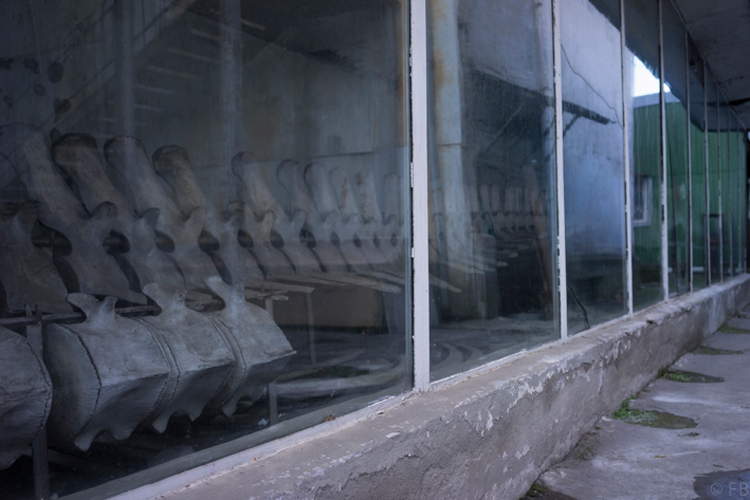Batumi Transitus (2014)
In december 2013 and January 2014, two years after his first visit1 to Georgia, Filip Berte traveled again to this intriguing country in Transcaucasia, in the border area of Europe and Asia.
With Batumi Transitus2 Berte zooms in on Batumi, a small port city on the Black Sea coast and capital of the Autonomous Republic of Adjara in Southwest Georgia.
Berte’s point of view for this Batumi-series is in line with his earlier work in Tbilisi1. He traces and documents the material changes in the city, as imprints of the turbulent transition process in Georgia.
Since its independence in 1991 and after the Rose Revolution of 2003 the chaotic change of an authoritarian regime (Eduard Shevarnadze) to a liberal democracy (Mikheil Saakashvili) evidently also translates itself into the transformation of the urban and built fabric. During the reign of president Saakashvili (2004 – 2013), the pro-Western leader of the Rose Revolution, the sight of the country changed significantly. Mainly in the major cities Saakashvili’s intention to lead Georgia into the future takes shape in state-of-the-art constructions that light up in the evening and at night. A new Presidential Palace, a new Parliament building, new administrative service centers, bridges, railway stations and airports with avid use of reinforced concrete, steel and glass are some of the main exponents of the new, ‘transparent’ regime that radically turns its back from the greylag (communist) past. A new Georgia is being built, with the aim of moulding a new post-Soviet identity with which the population could identify.
Saakashvili makes no secret of the fact that he wants to make from Batumi, his so-called ‘daughter’, a glowing, glittering jewel in the Black Sea. The story goes that with this brand new, decked out resort he wants to offer a counterweight for the country’s loss of Sochumi, capital of breakaway Abkhazia and other famous seaside resort on the Black Sea. There is gambled and there is a lot of (foreign) money deployed on tourism to put Batumi as a new pearl on the map. All that is ‘old’ or is reminiscent of the dark past should either be dismantled or refurbished, for the benefit of the tourist development of the city. Renewal, whatever it takes. Even, if the local valuable architectural heritage has to be discarded, systematically. Private property developers virtually get free reign to intervene in the urban fabric. Urban planning regulations be bypassed. Laws protecting the heritage be outvoted. Critical voices or popular resistance are nipped in the bud. Laisser faire, laisser passer.
A second approach for Batumi Transitus is the situation of IDPs, or Internally Displaced Persons. Berte met these ethnic-Georgian refugees from the breakaway regions of Abkhazia and South Ossetia in both the dreary reception places where they were accommodated by the previous Government, and new settlements elsewhere in Batumi. In contrast to the rapid, large-scale and eye catching architectural-urban transformation is there in terms of improvement of the housing situation for IDPs little change visible. Their story is a story of stagnation. The issue of IDPs is a persistent humanitarian problem as long as the conflicts in Abkhazia and South Ossetia remain unresolved. The Government should in the meantime since two decades guarantee suitable accommodation for the people who fled the wars and often have to live below the poverty line. The contrast with the expansion of five star-hotel chains, gambling palaces and exuberant new residential towers allover Batumi is great.
Batumi Transitus shows those two realities, smashing, and abrasive side by side; the new 34-storey residential towers, excelling above the impoverished ‘Kruchovka’s’ or the five-storey apartment blocks from the Soviet era of Nikita Krushchev. Both shed light and shade off on each other.
- Tbilisi, capital of Georgia, is one of the four cities which Filip Berte focused on in 2011, in the framework of its project Eutopia/The Graveyard as well as the citybooks-project of Flemish-Dutch House deBuren. The concept of ‘the margin’ served as thematic approach for this project. Three locations were selected because of their geographical border-position and featured in the form of short films: i.e. Melilla, Spanish enclave in Morocco, Chisinau in Moldova and Tbilisi in Georgia. Brussels is the fourth location, not chosen because of a geographical border-position, but because of the social interpretation of the concept of ‘the margin’ within a political ‘center’. Where Melilla is considered as a place wherefrom people want to migrate towards Europe, Brussels is symbolically seen as the place of arrival for those who want to replace ‚the margin’ for the center.
‘The margin’ or ‘frontier’ is the perfect place where ‘transition’ manifests itself. This applies both to Georgia from physico-geographical and political-economic terms: the country is located geographically in the Europe-asia border area of Transcaucasia and from a political-economic perspective a country in full transition; Since its separation from the Soviet Union and its independence in 1991 the country is taking a pro-Western course with a future perspective focused on Europe. This transition is since the 1990’s bright complicated by two frozen conflicts within Georgian territory. The autonomous regions of Abkhazia and South Ossetia unilaterally declared itself independent of Georgia, in 1993 and 1990 respectively. Georgia is not prepared to recognize these self-declared republics, neither does the majority of the International Community, except Russia. Up until today, these areas are sources of continuing tensions and conflict, both on domestic political level and in respect of the political relations with Russia. - Batumi Transitus is a series of 39 photos, made in commission of Flemish-Dutch House deBuren, in the framework of the longterm BOZAR-project The Caucasus: from sea to sea.
- Still Life
- Iveria Beach
- IDP Hotel Amirani #1
- Soviet Dolphin
- Babilon
- Palmtree
- Maritime Dream
- Cross on the Beach
- Small House In Between
- Christmas Tree
- Hyper Construction
- Soviet Workers’ Dormitory
- Ornament and Crime
- IDP – Kitchen #1
- IDP – Bedroom
- Batumi Dawn
- Whale
- Hyper-Façade
